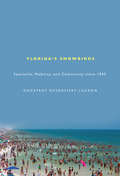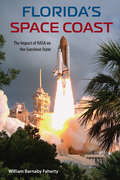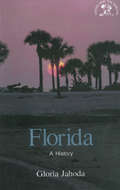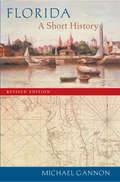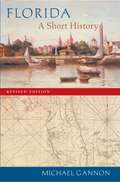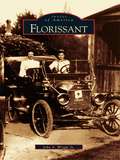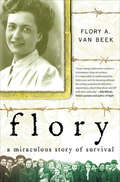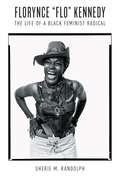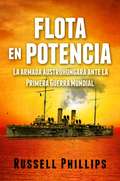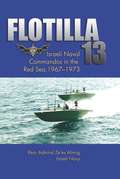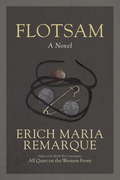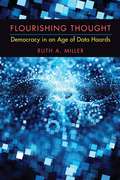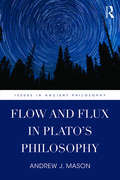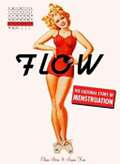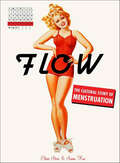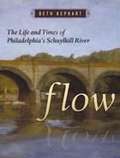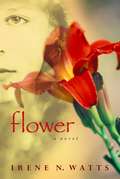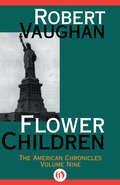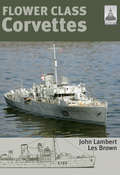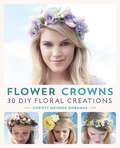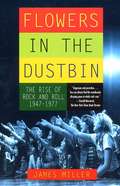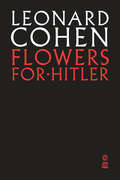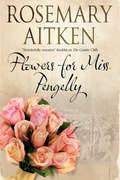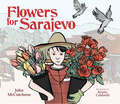- Table View
- List View
Florida's Snowbirds
by Godefroy Desrosiers-LauzonDeveloping numerous themes, including leisure, state-promoted tourism, citizenship, and business investment, Godefroy Desrosiers-Lauzon considers advertisements, movies, policymakers, and the behaviour of snowbirds in Florida to provide the most thorough study of the vacation state to date. He also looks at the temporary communities of Canadians, Québecois, New Englanders, and Mid- Westerners that develop, showing how they blur the lines that usually divide national and regional identities, and youth and age. An insightful work full of amusing details, Florida's Snowbirds pieces together a complete cultural atlas of Florida Snowbirds that goes far beyond the familiar postcards they send home
Florida's Snowbirds: Spectacle, Mobility, and Community since 1945
by Godefroy Desrosiers-LauzonDeveloping numerous themes, including leisure, state-promoted tourism, citizenship, and business investment, Godefroy Desrosiers-Lauzon considers advertisements, movies, policymakers, and the behaviour of snowbirds in Florida to provide the most thorough study of the vacation state to date. He also looks at the temporary communities of Canadians, Québecois, New Englanders, and Mid- Westerners that develop, showing how they blur the lines that usually divide national and regional identities, and youth and age. An insightful work full of amusing details, Florida's Snowbirds pieces together a complete cultural atlas of Florida Snowbirds that goes far beyond the familiar postcards they send home
Florida's Space Coast: The Impact of NASA on the Sunshine State (Florida History and Culture)
by William B. Faherty"An important, interesting study of the relations between the Kennedy Space Center and the communities of Brevard County, Florida."--Roger D. Launius, chief historian, NASA, Washington, D.C."This outstanding book provides readers of Florida history our first insight into the impact that high technology has had on the state. Brevard County is a veritable laboratory for understanding what happens when space science and engineering put down roots in a wilderness setting. Faherty's writing is direct, simple, even folksy at times. I devoured it!"--Michael Gannon, author of Pearl Harbor Betrayed and A Short History of FloridaFlorida&’s Space Coast tells the compelling story of America's half century in space exploration, from the successful launch of the first two-stage rocket in 1950 through the latest space shuttle missions of 2000. Told from the unique viewpoint of the people who built the Spaceport, this book shows how the space program transformed the east central Florida coast from a traditional citrus production and tourist area to one of the most influential high-tech centers in the nation.Cape Canaveral was chosen as a missile launch site because of its many geographical advantages. However, in the early years of the space program, the area was far from an ideal place for NASA employees to raise their families. NASA brought in thousands of space-related workers, who, besides sending machines and men into space, had to meet the challenge of moving their families from urban environs to a rural southern county. This book engagingly recounts the parallel stories of the establishment of America's space program and its impact on the development of Brevard County.William Barnaby Faherty is professor emeritus of history at St. Louis University and director of the Museum of the Western Jesuit Missions in Hazelwood, Missouri.
Florida: A History
by Gloria JahodaGloria Jahoda unfolds the colorful story in this book, from the gold-seeking conquistadores of Spain, and the alleged search for a fountain of youth, to today's vast influx of tourists and the retired in search of sun, health, and the delights of Disney World.
Florida: A Short History
by Michael GannonAs if Ponce de León, who happened on the peninsula in 1513, returned today to demand a quick reckoning ("Tell me what happened after I was there, but leave out the boring parts!"), Michael Gannon recounts the longest recorded history of any state in the nation in twenty-seven brisk, fully illustrated chapters.From indigenous tribes who lived along spring-fed streams to environmentalists who labor to "Save Our Rivers," from the first conquistadors whose broad black ships astonished the natives to the 123,000 refugees whose unexpected immigration stunned South Floridians in 1980, the story of the state is as rich and distinctive as the story of America.And it’s older than most people think. As Gannon writes, "By the time the Pilgrims came ashore at Plymouth, St. Augustine was up for urban renewal. It was a town with fort, church, seminary, six-bed hospital, fish market, and about 120 shops and houses. Because La Florida stretched north from the Keys to Newfoundland and west to Texas, St. Augustine could claim to be the capital of much of what is now the United States." Gannon tells his fast-marching saga in chronological fashion. Starting with the wilderness of the ancient earth, he fills the landscape with Indians, colonists, pioneers, entrepreneurs, politicians, and the panorama of Florida today--"the broad superhighways that wind past horse farms, retirement communities, international airports, launch pads, futuristic attractions, and come to rest, finally, amidst the gleaming towers of Oz-like cities." This revised edition concludes with a look into the twenty-first century, including "in-migration," restoration of the Everglades, education, the work force, and the infamous 2000 presidential election.
Florida: A Short History, Revised Edition
by Michael GannonGannon tells his fast-marching saga in chronological fashion. Starting with the wilderness of the ancient earth, he fills the landscape with Indians, colonists, pioneers, entrepreneurs, politicians, and the panorama of Florida today. This revised edition concludes with a look into the twenty-first century, including “in-migration,” restoration of the Everglades, education, the work force, and the infamous 2000 presidential election.
Florissant
by John A. Wright Sr.The first civil government in Florissant was established in 1786, three years before the United States adopted its constitution and George Washington was elected the country's first president. French farmers and fur trappers looked upon the land and called it the "Valle Fleurissant"-which is to say, "the flowering or fertile valley." The community remained small until after World War II. Between 1950 and 1980, the population grew from 3,737 to 76,754. Today the community strives to preserve its proud heritage and build on the strength of its diverse population. The historic images in this book illustrate the city's founding and development, from the first French settlers to the post World War II building boom to the exciting new city of today.
Flory: Survival in the Valley of Death
by Flory Van BeekIn 1939, as the Nazi occupation grew from threat to reality, the Jewish population throughout Europe faced heart-wrenching decisions—to flee and lose their homes or to go into hiding, hoping against all odds to avoid the fate of being discovered. Holocaust survivor Flory A. Van Beek faced this terrible choice, and in this poignant testament of hope she takes us on her personal journey into one of history's darkest hours.Only a teenage girl when the Nazis invaded her neutral homeland of Holland, Flory watched the only life she had ever known disappear. Tearfully leaving her family, Flory tried to escape on the infamous SS Simon Bolivar passenger ship with Felix, the young Jewish man from Germany who would later become her husband. Their voyage brought not safety but more peril as their ship was blown up by Nazi planted mines, one of the first passenger ships destroyed by the Germans during World War II, sending nearly all of its passengers to a watery end. Miraculously, both Flory and Felix survived.After recovering from their injuries in England, they returned to their homeland, overjoyed to be reunited with their families yet shocked to discover their beloved Holland a much-changed place. As the Nazi grip tightened, they were forced into hiding. Sheltered by compassionate strangers in confined quarters, cut off from the outside world and their relatives, they faced hunger and the stress of daily life shadowed by the ever-present threat of certain death. Yet they also discovered, with the remarkable and brave families who sacrificed their own safety to help keep Flory and Felix alive, a set of friends that remain as close as family to this day.A tribute to family, faith, and the power of good in the face of disparate evil, this gripping account captures the terror of the Holocaust, the courage of those who risked their lives to protect their fellow compatriots, and the faith of those who, against all odds, managed to survive.
Florynce "Flo" Kennedy: The Life of a Black Feminist Radical (Gender and American Culture)
by Sherie M. RandolphOften photographed in a cowboy hat with her middle finger held defiantly in the air, Florynce "Flo" Kennedy (1916–2000) left a vibrant legacy as a leader of the Black Power and feminist movements. In the first biography of Kennedy, Sherie M. Randolph traces the life and political influence of this strikingly bold and controversial radical activist. Rather than simply reacting to the predominantly white feminist movement, Kennedy brought the lessons of Black Power to white feminism and built bridges in the struggles against racism and sexism. Randolph narrates Kennedy's progressive upbringing, her pathbreaking graduation from Columbia Law School, and her long career as a media-savvy activist, showing how Kennedy rose to founding roles in organizations such as the National Black Feminist Organization and the National Organization for Women, allying herself with both white and black activists such as Adam Clayton Powell, H. Rap Brown, Betty Friedan, and Shirley Chisholm.Making use of an extensive and previously uncollected archive, Randolph demonstrates profound connections within the histories of the new left, civil rights, Black Power, and feminism, showing that black feminism was pivotal in shaping postwar U.S. liberation movements.
Flota en potencia. La armada austrohúngara ante la Primera Guerra Mundial
by Russell Phillips Adrián Levices CasalUn listado completo y detallado de los barcos que conformaron la Armada austrohúngara La Kaiserliche und Königliche Kriegsmarine -- la Armada austrohúngara -- estaba aún en proceso de construcción cuando el Archiduque Franz Ferdinand y su espoa Sophie recibían un funeral de estado a bordo de su buque insignia, a comienzos de la Primera Guerra Mundial; un buque a finales de la guerra fue disuelto junto con todo el Imperio que lo comandaba. Durante la guerra, esta pequeña pero poderosa "flota en potencia" obligó a los aliados a mantener bloqueado el Estrecho de Otranto. Los U-boats alemanes y austrohúngaros surcaron el Mediterraneo, aún cuando los principales barcos apenas salieron de puerto. Ilustrado con treinta fotografías e imágenes, este libro proporciona una listado completo y detallado de los barcos que conformaron la KuK Kriegsmarine, las operaciones en las que participaron y los problemas que una flota como esta tuvo que superar, desde problemas políticos hasta navíos construídos por un país sin mar: Hungría.
Flotilla 13
by Ze'Ev AlmogFlotilla 13 is the elite naval commando unit of the Israeli Defense Forces that specializes in maritime-related combat and counter-terrorist missions. To maintain secrecy, few of its missions have, until now, been made public. With this book, the unit s commander, Rear Adm. Ze ev Almog, unveils the amazing story of Flotilla 13. For the first time he offers details of many of the unit s operations during the War of Attrition and the Yom Kippur War (1968 1973), including the raids on the Adabiya coastal post and the Green Island fortress that resulted in heavy casualties to the enemy and a strategic change in Israel s combat arena. He candidly discusses his unit s despair following failed operations prior to this period and describes how Flotilla 13 was transformed into a unit of high morale and performance. First published in Hebrew in 2007, this revealing account of what went on is now available in English.
Flotsam: A Novel
by Erich Maria Remarque Denver LindleyFrom the beloved author of All Quiet on the Western Front, Flotsam is a terrifying portrait of Europe as the Nazi shadow falls over the continent. Political dissidents, Jews, medical students, petty criminals: Among the thousands of displaced persons traveling the unpaved roads of Europe, there are Steiner and Kern. Both have irritated officials for outstaying their two-week sojourn in Czechoslovakia. And so they must leave. Not that either has any place to go. Not in 1939. But when a man is led by a guard to the border of one country, he must try another. Until he is escorted from that one too. Living hand-to-mouth, selling shoelaces and safety pins for a few pennies, Steiner and Kern find that, remarkably, there are still pleasures to be had. Paris, for one; love, for another. For amid the heartless cruelty and cold-blooded laws of the Nazi state, there is still humanity and kindness. And there is incomparable joy in falling in love, surviving, and telling your story so it is never forgotten. "The world has a great writer in Erich Maria Remarque. He is a craftsman of unquestionably first rank, a man who can bend language to his will. Whether he writes of men or of inanimate nature, his touch is sensitive, firm, and sure."--The New York Times Book ReviewFrom the Trade Paperback edition.
Flourishing Thought: Democracy in an Age of Data Hoards
by Ruth A. MillerChallenging the posthumanist canon that celebrates the preeminence of matter, Ruth Miller, in Flourishing Thought contends that what nonhuman systems contribute to democracy is thought. Drawing on recent feminist theories of nonhuman life and politics, Miller shows that reproduction and flourishing are not antithetical to contemplation and sensitivity. After demonstrating that processes of life and processes of thought are indistinguishable, Miller finds that four menacing accumulations of matter and information--global surveillance, stored embryos, human clones, and reproductive trash--are politically productive rather than threats to democratic politics. As a consequence, she questions the usefulness of individual rights such as privacy and dignity, contests the value of the rational metaphysics underlying human-centered political participation, and reevaluates the gender relations that derive from this type of participation. Ultimately, in place of these human-centered structures, Miller posits a more meditative mode of democratic engagement. Miller's argument has shattering implications for the debates over the proper use and disposal of embryonic tissue, alarms about data gathering by the state and corporations, and other major ethical, social, and security issues.
Flow and Flux in Plato's Philosophy (Issues in Ancient Philosophy)
by Andrew J. MasonIn this bold new study, Andrew J. Mason seeks both to shed light on the key issue of flux in Plato’s work, and to show that there is also in Plato a notion of flow that needs to be distinguished from flux. Mason brings out the importance of this hitherto neglected distinction, and proposes on its basis a new way of understanding the development of Plato’s thought. The opposition between the ‘being’ of Forms and the ‘becoming’ or ‘flux’ of sensibles has been fundamental to the understanding of Plato from Aristotle to the present day. One key concern of this volume is to clarify which kinds or levels of flux Plato accepts in sensibles. In addition, Mason argues that this traditional approach is unsatisfactory, as it leaves out the important notion of flow. Unlike flux, flow is a kind of motion that does not entail intrinsic change. It is also not restricted to the sensible, but covers motions of soul as well, including the circular motion of nous (intelligence) that is crucial in Plato’s later thought, particularly his cosmology. In short, flow is not incompatible with ‘being’, and in this study Plato’s development is presented, largely, as his arrival at this view, in correction of his earlier conflation of flux and flow in establishing the dichotomy between being and becoming. Mason’s study offers fresh insights into many dialogues and difficult passages in Plato’s oeuvre, and situates Plato’s conception and usage of ‘flow’ and ‘flux’ in relation to earlier usage in the Greek poetic tradition and the Presocratic thinkers, particularly Heraclitus. The first study of its kind, Flow and Flux uncovers dimensions of Plato’s thinking that may reshape the way his philosophy is understood.
Flow: The Cultural Story of Menstruation
by Susan Kim Elissa SteinIn this hip, hilarious and truly eye-opening cultural history, menstruation is talked about as never before. Flow spans its fascinating, occasionally wacky and sometimes downright scary story: from mikvahs (ritual cleansing baths) to menopause, hysteria to hysterectomies—not to mention the Pill, cramps, the history of underwear, and the movie about puberty they showed you in 5th grade. <p><p> Flow answers such questions as: What’s the point of getting a period? What did women do before pads and tampons? What about new drugs that promise to end periods—a hot idea or not? Sex during your period: gross or a turn-on? And what’s normal, anyway? With color reproductions of (campy) historical ads and early (excruciating) femcare devices, it also provides a fascinating (and mind-boggling) gallery of this complex, personal and uniquely female process. <p><p> As irreverent as it is informative, Flow gives an everyday occurrence its true props – and eradicates the stigma placed on it for centuries.
Flow: The Cultural Story of Menstruation
by Susan Kim Elissa SteinIn this hip, hilarious and truly eye-opening cultural history, menstruation is talked about as never before. Flow spans its fascinating, occasionally wacky and sometimes downright scary story: from mikvahs (ritual cleansing baths) to menopause, hysteria to hysterectomies—not to mention the Pill, cramps, the history of underwear, and the movie about puberty they showed you in 5th grade. Flow answers such questions as: What's the point of getting a period? What did women do before pads and tampons? What about new drugs that promise to end periods—a hot idea or not? Sex during your period: gross or a turn-on? And what's normal, anyway? With color reproductions of (campy) historical ads and early (excruciating) femcare devices, it also provides a fascinating (and mind-boggling) gallery of this complex, personal and uniquely female process. As irreverent as it is informative, Flow gives an everyday occurrence its true props – and eradicates the stigma placed on it for centuries.
Flow: The Life and Times of Philadelphia's Schuylkill River
by Beth KephartThe Schuylkill River-the name in Dutch means "hidden creek"-courses many miles, turning through Philadelphia before it yields to the Delaware. "I am this wide. I am this deep. A tad voluptuous, but only in places," writes Beth Kephart, capturing the voice of this natural resource in Flow. An award-winning author, Kephart's elegant, impressionistic story of the Schuylkill navigates the beating heart of this magnificent water source. Readers are invited to flow through time-from the colonial era and Ben Franklin's death through episodes of Yellow Fever and the Winter of 1872, when the river froze over-to the present day. Readers will feel the silt of the Schuylkill's banks, swim with its perch and catfish, and cruise-or scull-downstream, from Reading to Valley Forge to the Water Works outside center city. Flow's lush narrative is peppered with lovely, black and white photographs and illustrations depicting the river's history, its people, and its gorgeous vistas. Written with wisdom and with awe for one of the oldest friends of all Philadelphians, Flow is a perfect book for reading while the ice melts, and for slipping in your bag for your own visit to the Schuylkill.
Flower
by Irene N. WattsThirteen-year-old Katie is an unwilling summer guest in the Victorian home of her Halifax grandparents. All she wants to do is stay in her attic bedroom and brood. Disgruntled over her new stepmother's pregnancy and how a baby might affect her life, Katie takes refuge in her dreams of playing the part of the disagreeable orphan Mary Lennox in the upcoming school production of The Secret Garden.When Katie sees a shadow on her bedroom wall of an old-fashioned girl holding a flower, she tries to convince herself it is caused by moonlight. But the girl reappears and shares her life with Katie, reaching across the years to her. Is she a ghost? As Katie searches for some tangible evidence of the girl's presence, she discovers a package of letters from World War I containing clues to a bygone time when British orphans were sent to Canada as Home Children. In this haunting journey of a young girl looking for answers and an orphan girl from the past who tries to provide them, award-winning novelist Irene N. Watts uncovers a tale about the real meaning of family.From the Trade Paperback edition.
Flower Children
by Robert VaughanThe 1960's have gone down in history as a decade of social and political upheavals, when Americans grappled with the moral dilemmas and social divisions caused by the Vietnam war, the struggle for civil rights, and the radicalism of the nation's youth. In the ninth volume of Robert Vaughan's stunning AMERICAN CHRONICLES, a panoramic picture of the American experience unfolds from the perspective of Americans from all walks of life.Cocky and charismatic Bob Parker courts death every day, piloting a chopper in Vietnam. Living each day as though it is his last, he parties recklessly and fights furiously, determined to make it through the war and return home. Heiress Tina Canfield wants only to escape the confines of her wealthy, prominent and conservative family. She longs to join the throngs of young people tuning in, turning on and dropping out. When Tina runs away to join the summer of love in San Francisco, she is unprepared for the heartbreak that freedom can sometimes bring. African-American vet Andrew Jackson finds himself a changed man after a long tour of duty in the US Army. He is as yet unaware of the enormous changes that have occurred at home in the South, as protests and violence explode in the streets of Alabama.
Flower Class Corvettes (Shipcraft Ser.)
by John Lambert Les BrownA guide to creating models of the World War II warship, featuring history on the ship as well as crafting tips. The &“ShipCraft&” series provides in-depth information about building and modifying model kits of famous warship types. Lavishly illustrated, each book takes the modeler through a brief history of the subject class, highlighting differences between sister-ships and changes in their appearance over their careers. This includes paint schemes and camouflage, featuring color profiles, highly detailed line drawings, and scale plans. The modelling section reviews the strengths and weaknesses of available kits, lists commercial accessory sets for super-detailing of the ships, and provides hints on modifying and improving the basic kit. This is followed by an extensive photographic gallery of selected high-quality models in a variety of scales, and the book concludes with a section on research references—books, monographs, large-scale plans and relevant websites. This volume includes all the features of the regular series, but the extent has been doubled to include far more detailed drawings of a class of ship that was built in huge numbers and in many variations. Mainstay of the Atlantic battle against the U-boats, Flower class corvettes were used by the British, Canadian, French, and U.S. Navies.&“An excellent guide to an important ship in the Second World War, for modeler and maritime enthusiasts alike.&” —The Nautical Magazine
Flower Crowns: 30 Enchanting DIY Floral Creations
by Christy Meisner DoramusTHE FIRST GUIDE SHOWING YOU HOW TO CRAFT THESE WILDLY POPULAR, WHIMSICAL, AND GLAMOROUS HAIR ACCESSORIES AT HOME Whether you’re at a wedding, going out on the town or partying at a musical festival, the flower crowns in this book will make your outfit standout for any occasion. With step-by-step instructions and photos, tips for choosing flowers and hints on color combinations, this is the ultimate guide to creating gorgeous crowns, including: ROSEBUD & DAISY GREEK GODDESS LEAVES & LAVENDER HARVEST PINK PEONY FRESH SUNFLOWER SUMMER CONCERT WILDFLOWER TULIP & DELPHINIUM MARDI GRAS FAUX FLOWER BLUSHING BRIDE HAIRPIECE
Flowers In The Dustbin: The Rise of Rock and Roll, 1947-1977
by James MillerA prizewinning historian and journalist who has covered the pop music scene for more than three decades, James Miller brings a powerful and challenging intellectual perspective to his recounting of some key turning points in the history of rock. Arguing that the music underwent its full creative evolution in little more than twenty-five years, he traces its roots from the jump blues of the forties to the disc jockeys who broadcast the music in the early fifties. He shows how impresarios such as Alan Freed and movie directors such as Richard Brooks (of Blackboard Jungle) joined black music to white fantasies of romance and rebellion, and then mass-marketed the product to teenagers. He describes how rock matured as a form of music, from Chuck Berry and Elvis Presley to the Beatles, Bob Dylan, and Marvin Gaye, defining a decade of rebellious ferment. At the same time, he candidly recounts how trendsetting rock acts from Jim Morrison and the Doors in the late sixties to the Sex Pistols in the late seventies became ever more crude, outrageous, and ugly -- "as if to mark," writes Miller, "the triumph of the psychopathic adolescent." Richly anecdotal and always provocative, Flowers in the Dustbin tells the story of rock and roll as it has never been told before.
Flowers for Miss Pengelly
by Rosemary AitkenCornwall, 1911: Young lady’s maid Effie Pengelly is confused and alarmed when charming Constable Alexander Dawes questions her about an unidentified, now deceased man who came to the town asking for her whereabouts. As the weeks go by, Constable Dawes seeks out any excuse to talk to Miss Pengelly, but he knows his family would never allow them to marry. When the investigation into the dead man finally reveals a clue, could this lead Alex and Effie towards the future they deserve?
Flowers for Sarajevo
by John McCutcheonYoung Drasko is happy working with his father in the Sarajevo market. Then war encroaches. Drasko must run the family flower stand alone.One morning, the bakery is bombed and twenty-two people are killed. The next day, a cellist walks to the bombsite and plays the most heartbreaking music Drasko can imagine. The cellist returns for twenty-two days, one day for each victim of the bombing. Inspired by the musician's response, Drasko finds a way to help make Sarajevo beautiful again.Inspired by real events of the Bosnian War, award-winning songwriter and storyteller John McCutcheon tells the uplifting story of the power of beauty in the face of violence and suffering. The story comes to life with the included CD in which cellist Vedran Smailović accompanies McCutcheon and performs the melody that he played in 1992 to honor those who died in the Sarajevo mortar blast.
